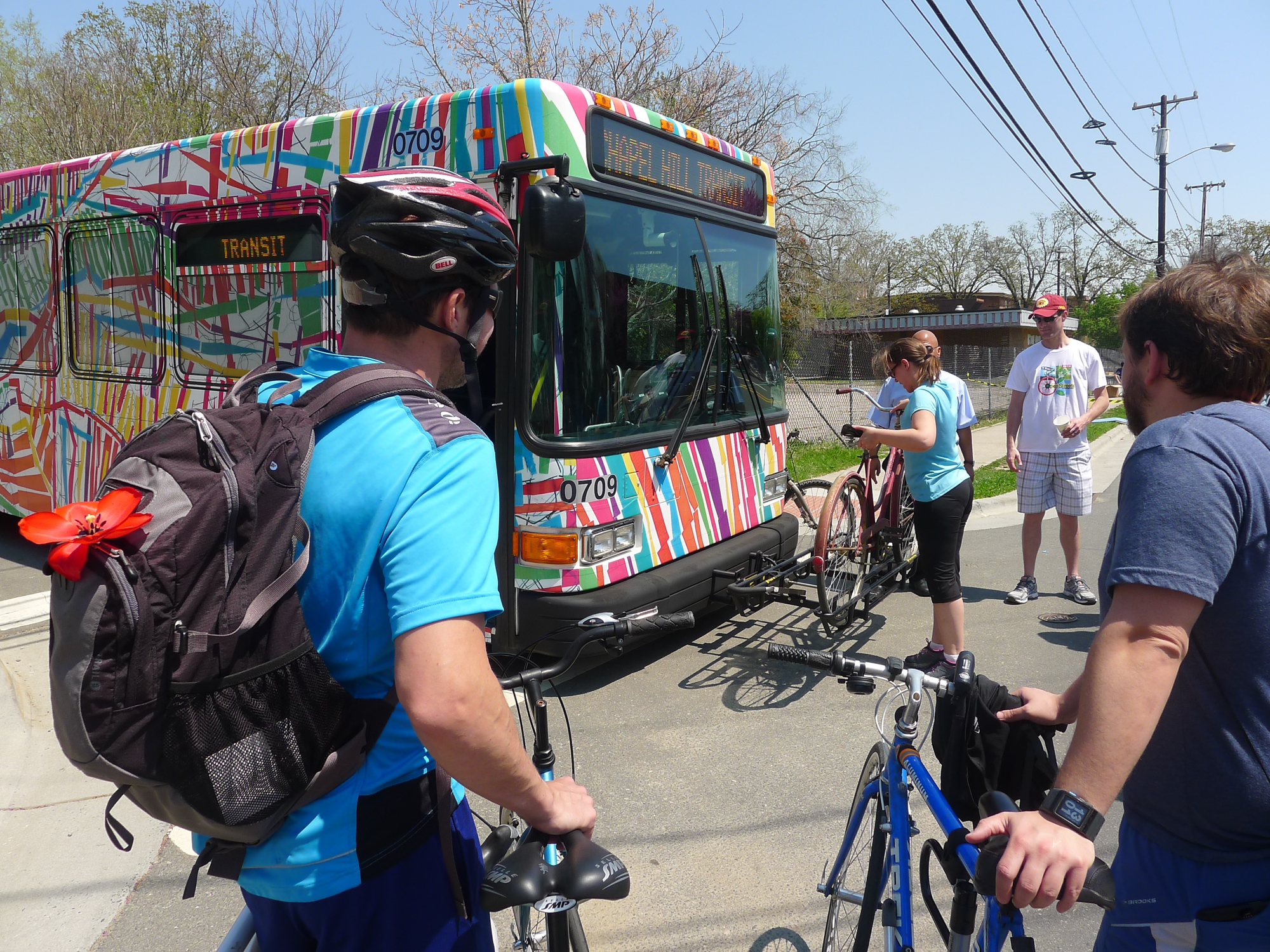A way of life that integrates physical activity into everyday routes, e.g., walking to the store, biking to work, or walking up steps, as defined by Active Living by Design. Strategies include a combination of physical and reactional activities aimed at promoting a healthier lifestyle through active transportation and active play.
Why is this important to your community?
Nearly one-third of adults in North and South Carolina were obese in 2010 (28% and 32%, respectively), mirroring nationwide obesity statistics. Overall, African Americans, Hispanics and males report even higher rates of obesity and the problem is also worse among children, with 31% of North Carolina children and 39% of South Carolina children reported as being obese. The good news is that obesity, and many of the health problems it can give rise to (Type II diabetes, heart disease, high blood pressure, cancer, and greater risk for other health problems) can be addressed by greater levels of physical activity. Going to the gym may not be possible for everyone, but a community committed to active living can make it possible for more people to build exercise into their daily routines. The benefits are huge—not only better health, but also major health-care savings for families and for the economy; our nation currently spends over $190 billion (nearly 21% of annual medical spending) on obesity-related illnesses. Evidence shows that the health of a community is linked to the strength of the local economy. Data from a study conducted by the Robert Wood Johnson Foundation’s County Health Rankings and the University of Wisconsin Population Health Institute revealed a clear relationship between health factors (e.g., social and economic issues, access to health care, and individual health behavior) and health outcomes (e.g., length of life and quality of life). All of these socio-economic factors are interconnected and influence the physical and economic health of a community – jobs reduce poverty and increase access to health care which in turn improves the quality of life for residents.
Skip directly to
How Does It Work?
Resources
Using the Tool
Partners
Where Has It Worked?
Where is it appropriate to use?
What priorities does it address?
What other tools are related?
- Water Resource Protection
How does it work?
Active living campaigns encourage community residents to get out and participate in activities and can take the form of community partnerships, fitness classes, active and safe routes to school, and other grass-roots efforts, or even through urban design such as “complete streets” that provide safe places to walk or bike. Campaigns, often funded by grants from nonprofit organizations and foundations, have been successful in mobilizing communities to work together to help us to curb our sedentary lifestyles. There are a number of nonprofit and government resources, including the Let’s Move campaign, to assist communities in promoting active living locally (see resources for more info). As development or redevelopment happens, communities also can choose to invest in more walkable development patterns, bike paths and greenway trails, and transit, all of which increase physical activity.
Resources
- Active Living by Design
- Let’s Move! Cities, Towns and Counties Guide, National League of Cities
- Let’s Move!
- Physical, Mental, and Skin Health for Kids and Teens
- Healthy Eating Active Living Cities Campaign, Oregon Public Health Institute
- Partners for Active Living, Spartanburg, SC
- Eat Smart Move More SC Health + Planning Toolkit
- A Healthy Community = A Strong Local Economy
Ready to get started?
Using the Tool
- Conduct focus group discussions or form a working group composed of local officials, interested residents, health providers, schools, nonprofit organizations, businesses, and other potential partners to discuss creating an active living campaign. The working group or lead point person should consider:
- Scale of the campaign: Should it be a multipronged approach dealing with many issues related to public health (fitness, healthy food education, and physical incentives for active living including transportation and recreation) or a smaller effort focusing on one aspect such as safe, active routes to schools?
- What partners should be involved: Will the active living campaign work with existing organizations focused on promoting healthy and active lifestyles (i.e. Active Living by Design or Eat Smart Move More NC)? Will a major hospital or healthcare consortium help with sponsorship?
- Funding strategies: These can include existing grants, fundraising, sponsorships, and alternative funding options to finance marketing campaigns or specific projects.
- Marketing and Communications: Who is the target audience, and how can they best be reached? Is it community-wide or more focused? .
- Review your existing comprehensive plan and land use regulations and consider updating, as needed, to support healthy communities. Communities can add health goals, strategies, and actions to comprehensive plans through the use of Health Impact Assessments (HIAs). In addition, as a powerful land use tool, zoning can help promote or discourage active living as it addresses density, mix of uses, and street connectivity. Potential updates include:
- Review comprehensive plan goals and strategies, and consider adding policies to promote recreational access and physical activity, fresh foods, and collaboration with public health organizations.
- Revise or create mixed-use zones to establish minimum, rather than maximum, residential densities.
- Develop design guidelines and standards for pedestrian corridors that support safe walking and biking.
- Consider joining the Let’s Move Cities, Towns, and Counties Campaign of the National League of Cities. Benefits include national recognition, access to technical assistance, inventory of best practices, and the opportunity to participate in a national movement to build healthier communities.
- Create a communitywide needs assessment of local play spaces and parks and develop policies, programs, or initiatives that will improve opportunities for access and physical activity at local parks. Bear in mind that park access has been shown to not only improve health, but also to increase property values.
- Provide marketing and policy support which could include help applying for grant funding or marketing materials and outreach events to help garner public support.
Partners
- Advocacy Groups
- Colleges and Universities
- Community Development Organizations
- Community Service Providers
- Departments of Education / School Districts
- Economic Development Organizations
- Elected Officials
- Health and Wellness Programs
- Health Care Providers
- Landscape Architects, Planners, and Urban Designers
Where has it worked?
GO! Chapel Hill - Chapel Hill, NC
 Image Source: tarheelcoxn. Source License: CC BY-NC-SA 2.0.
Image Source: tarheelcoxn. Source License: CC BY-NC-SA 2.0.
Contact
David C. Bonk
dbonk@townofchapelhill.orgAbout the Program
GO! Chapel Hill, one of 25 community partnerships under the Robert Wood Johnson Foundation’s Active Living by Design program, encourages leaving your car at home and using public transportation, bicycling, and walking as a way to a healthier and more environmentally friendly lifestyle. Active Living by Design places emphasis on influencing individual behavior through larger, community-wide strategies to create an environment that promotes physical activity and health. GO! organizes events with partners in the community that raise public awareness and bring the community together to get fit including free bike inspections, bike-in movie nights, and CycleFests.
Why it works
GO! has been successful in building capacity and capitalizing on strengths within the community by forging partnerships with local businesses and engaged residents through the GO! Chapel Hill Partnership Advisory Committee. One such partnership with Diana Straughan, a parent concerned with lack of activity among school children, led to six schools in Chapel Hill adopting Active Routes to School strategies. These strategies include improved sidewalks, painted crosswalks, and removal of visual barriers. In addition to physical improvements, Straughan and other parents organized “Walking Wednesdays” to promote walking to school. Students who participate by walking to school on that day receive a prize or a sticker. This effort has not only led to an increase in the number of students who walk to school, but also the number of parents who walk with their children, expanding the social and physical benefits of the campaign.
- Colleges and Universities


